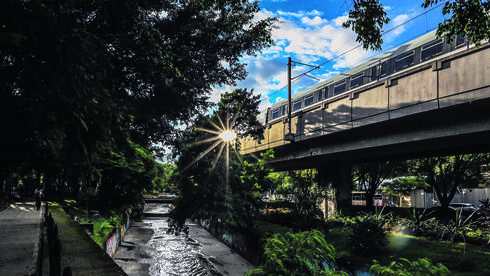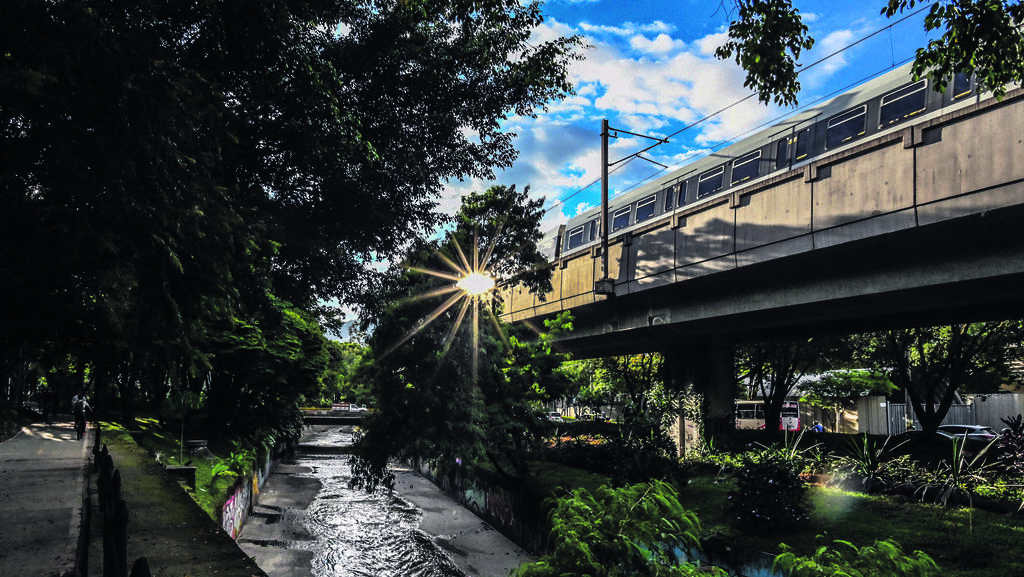
Cool cities: How global urban areas are tackling heat challenges
From implementing eco-friendly cooling systems in Singapore to increasing green spaces in Medellin, cities worldwide are reshaping their landscapes for a sustainable future.
In mid-August, the streets of Seville in southern Spain are almost deserted. At noon, temperatures regularly reach 40 degrees Celsius (104°F), even without any reports of an unusual "heat wave." Until 8 PM, residents rarely leave their homes, and it’s common to see children playing outside after midnight, as the daytime heat makes it unbearable to stay outdoors.
The scorching weather has shaped life in Seville for centuries, and it's no surprise that the hot air coming from North Africa has earned the city the nickname "the Iberian oven." But as the world heats up, this oven is turning into a furnace, and residents, already struggling with the extreme heat, are increasingly worried. Many fear that in the near future, the rising temperatures will deter tourists from visiting the area. Pessimists even suggest that parts of Seville could become uninhabitable.
And this is just the beginning. According to the C40 Cities initiative, which unites global efforts to tackle climate change in leading cities, the number of cities exposed to "extreme temperatures" is expected to triple over the next 15 years. By 2050, more than 970 cities will experience average summer temperatures of 35 degrees Celsius or higher. In such a reality, cities can't afford to ignore the situation and must find ways to cool down, enabling residents to maintain normal lives without putting their health at risk.
The municipality of Seville declared a climate emergency in 2019 and has since been working to keep the city livable and attractive to tourists. In recent years, Seville has implemented a variety of solutions, ranging from cooling public spaces to preparing for heat waves that threaten residents' lives. For instance, Seville became the first city in the world to classify heat waves into three categories based on severity (much like hurricanes). The city’s announcement of an impending heat wave triggers a protocol that includes opening municipal pools and water parks to the public, and sending health workers to check on the elderly and other at-risk individuals.
Seville
A holistic approach
To combat rising urban temperatures, Seville employs a combination of old and new solutions. In the city center, it's common to see white fabrics stretched between buildings to provide shade. Bicycle lanes have been expanded to reduce vehicle traffic, which contributes to rising temperatures, while parks and gardens have become vital tools in the fight against the heat. Since 2020, the municipality has been planting 5,000 shade trees annually and using heat-resistant building materials. Public fountains have been installed, and 264 public buildings have been converted into smart, sustainable structures. The city is also exploring modern solutions to manage high temperatures in both public spaces and buildings.
Currently, about 20% of Seville is covered by trees, with 1.3 square meters of green space per resident—more than the national average. The municipal budget for 2023 allocated 36.5 million euros for the expansion of green areas, an annual increase of about 6.4%. “These measures are crucial if we want people to use the streets—for children to play or for residents to shop or socialize outdoors,” former Seville Mayor Antonio Muñoz, who oversaw these initiatives, told Bloomberg.
Additionally, Seville is testing a project inspired by ancient Middle Eastern cultures that adapted to heat long before electricity provided a convenient but polluting solution. For several years, Seville has been piloting an underground canal system known as "qanat," which has been used for about 3,000 years in the Middle East and China to help farmers. Scientists José Sánchez Ramos and Servando Alvarez have led this 5-million-euro project, which is expected to begin operations by year-end after several delays. The system cools water at night and uses vertical vents to circulate the cool air above ground during the day. It aims to lower temperatures by 10 degrees Celsius in an area the size of two football fields using minimal energy.
Alongside this system, trees outside the complex provide partial shade, vegetation on the inner walls adds additional cooling, and the roof, painted white, reflects heat. Once the project is launched, it could inspire similar initiatives in other parts of the world facing extreme heat.
Medellin
Trees reduce morbidity
Not everyone supports complex technological solutions. Many urban planners and climate experts advocate for simpler, proven methods: smart urban planning with structural shading and massive tree planting. According to a 2023 study published in *The Lancet*, if European cities had 30% more trees in 2015, about 40% of the 6,700 heat-related deaths that summer could have been prevented.
Medellin, Colombia, is a case in point. Once notorious as the capital of a major drug cartel, the city has become greener and safer in recent years. Since 2016, the municipality has added 30 green corridors along roads and aqueducts, increasing the city's green space by 70 hectares. The city has planted 2.5 million plants and 880,000 trees, focusing on species that support biodiversity and reduce air pollution. In the first three years after the program launched, Medellin's average temperature dropped by 2 degrees Celsius, and acute respiratory infections fell by 40%, from 156 to 95 per 1,000 people.
Lessons from Seville, Medellin, and Singapore
Seville and Medellin are just two examples of cities adapting to previously unimaginable temperatures. In the summer of 2022, a heat wave near Luton, UK, melted airport runways and warped railway tracks, disrupting train service.
To prepare for such scenarios, cities must experiment with diverse solutions, says Rafi Reish, an urban planner and architect. But technology should be a last resort, he argues. Wide boulevards, for instance, often hinder effective shading, and cities should consider artificial shading structures and other measures like directing wind flow, integrating shaded green spaces, and providing benches and faucets.
Singapore is a model of effective urban cooling. The city’s government has worked to ensure that every resident will have a park within a 10-minute walk by the end of this decade, planting one million new trees. It also uses vertical shading by planting trees on buildings, which reduces cooling energy needs by 10-30%. Public housing buildings were painted in "cooling" colors, reflecting up to 75% of solar energy and lowering the surrounding temperature by 2 degrees. Singapore's approach includes extensive shading between residential areas and public transit, integrating designed shading and air-conditioned pedestrian paths.
France
Depaving in France
Another method gaining popularity is "depaving," the removal of asphalt and concrete to create green spaces. In France, a project near the Saint Autrop forest aims to replace 45,000 square meters of parking lots with water canals and vegetation, cooling the area and reducing flood risk. Similarly, the city of Louvain is depaving parking lots, leading to reduced car usage and improved rainwater absorption.
Studies suggest that properties near parks enjoy a "green premium." Research by Dr. Shiri Zemach Shamir of the Interdisciplinary Center found that proximity to parks can increase property values by about 9.25%. Large trees, according to the University of Washington, can boost property values by 3-15%.
For real estate professionals, these findings highlight that implementing advanced environmental solutions is not only the right thing to do but also financially beneficial in the long run—for both the environment and investors.














